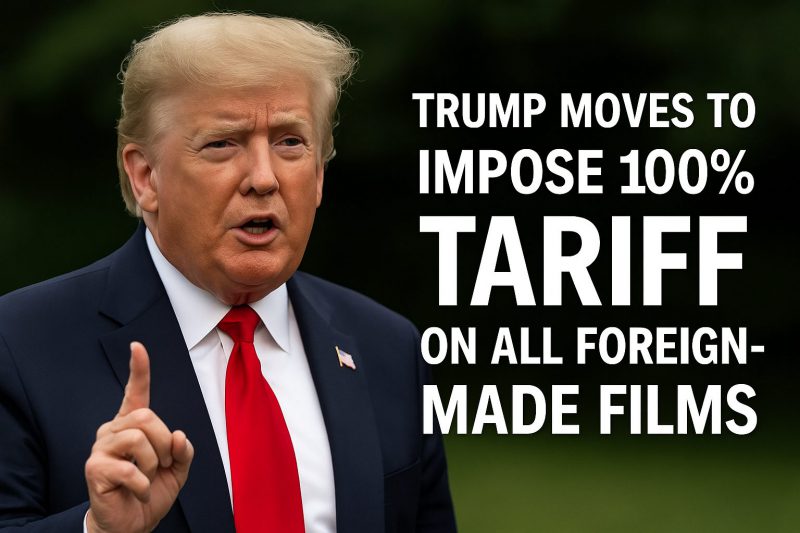The 100% tariff on foreign-made films was just announced by President Donald Trump as kind of a protective measure for the struggling U.S. movie industry that’s facing some pretty tough international competition. In a post he shared on Sunday night on his Truth Social platform, Trump went ahead and authorized the Department of Commerce and also the Office of the U.S. Trade Representative to implement this pretty substantial tariff on “any and all movies coming into our Country that are produced in foreign lands.” Right now, the President seems concerned about other nations drawing filmmakers away with various financial incentives.
Also Read: De-Dollarization: Warren Buffett Says the U.S. Dollar Is Going to Hell
Impact of 100% Tariff on Movie Industry and Global Film Production


U.S. Production Decline
The U.S. film industry has been facing some major setbacks in recent times, with overall production actually down about 26% compared to what we saw back in 2021. A bunch of issues like COVID-19, those really long 2023 guild strikes, and also the Los Angeles wildfires have all sort of contributed to this ongoing decline. The 100% tariff on foreign-made films is apparently trying to address these challenges by encouraging more domestic production.
President Trump stated:
“The Movie Industry in America is DYING a very fast death. This is a concerted effort by other Nations and, therefore, a National Security threat. It is, in addition to everything else, messaging and propaganda!”
Foreign Production Incentives
According to that annual survey done by ProdPro where they asked executives about their preferred filming locations, it turns out that not a single U.S. location even managed to rank in the top five preferred destinations. Toronto, the UK, Vancouver, Central Europe, and Australia basically dominated the list, while California only placed sixth, which is pretty surprising. This whole situation with the 100% tariff on foreign-made films reflects how these overseas incentives have been pulling productions away from America.
Trump told reporters at the White House:
“Other nations have been stealing the movie-making capabilities from the United States. If they’re not willing to make a movie inside the United States we should have a tariff on movies that come in.”
Also Read: Ripple XRP: ETF Inflows Will Surpass $8B by 2026
Implementation Challenges
There are, at the time of writing, still quite a few questions about how this 100% tariff on foreign-made films would actually work in real-world practice. Many films these days, such as the upcoming “Mission: Impossible – The Final Reckoning,” are typically shot across multiple countries all around the world. Despite all these challenges and complexities, Trump has gone ahead and appointed actors Mel Gibson, Jon Voight, and also Sylvester Stallone as “special ambassadors” to help revitalize Hollywood.
Based on the Motion Picture Association data American film exports totaled $22.6 billion in 2023 while generating a trade surplus valued at $15.3 billion which prompts consideration about the need for these protective measures since American films already thrive internationally.
Broader Economic Strategy
Trump’s national trade policy includes these increased 100% restrictions on foreign-made films while implementing intense Chinese product tariffs and applying baseline import duties to worldwide suppliers. He introduced an establishment of regulated rules which has generated numerous market fluctuations while initiating widespread regulatory confusion across multiple worldwide businesses.
Also Read: BRICS Nation to Launch a Stablecoin: Why It Will Threaten the US Dollar
This administration action solidifies the movie industry as yet another sector modified by its trade policies that includes automakers along with steel manufacturers and aluminum producers and pharmaceutical companies.





